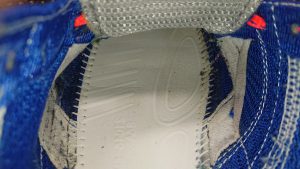 Commonly, manufacturers have advised to change your runners after 500-800 km; this is an extremely rough guide. While this figure has some use, we’re going to let you know of other signs that will help you find out if your shoes are still good to run in.
Commonly, manufacturers have advised to change your runners after 500-800 km; this is an extremely rough guide. While this figure has some use, we’re going to let you know of other signs that will help you find out if your shoes are still good to run in.
But before we get to WHEN you should change your shoes, let’s talk about WHAT makes up a shoe.
Shoes Anatomy
Your shoe is made up of an: upper, midsole and outsole. The upper can be made from cloth (like Adidas’ Primeknit or a mesh material). The midsole of a shoe is usually made of EVA, which is basically a type of foam. The outsole of the shoe, meanwhile, is made of hard rubber which helps to protect the midsole from the ground.
So now that we know what makes up a shoe, let’s talk about WHEN and, more importantly, WHY you need to change your shoes!
Changing Your Shoes
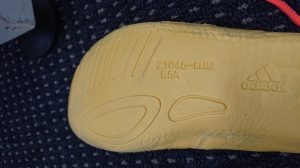
Quite a lot of people that come into our rooms at Capital Physiotherapy, would say that their shoes are fine. They would show how the outsole is minimally worn out (especially if the shoe has good quality outsole like Continental), or they would show how there are no tears in the upper. While these are good indications the shoe may be ok, you must look at the midsole.
The function of the midsole is the most important part of the shoe. The EVA foam is there to ensure that when you land on your feet, it can absorb any impact forces (so that your bones and joints don’t have to!) EVA foam can be likened to a kitchen sponge. When you squeeze a fresh sponge, you can feel the springiness as it returns to its original form. But over time, the physical properties of the sponge degrades.
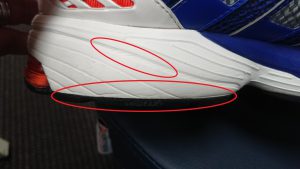
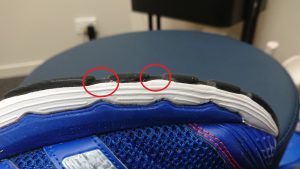 Similarly, as you pound the pavement or the treadmill, the midsole of your shoe degrades over time. Here are the signs of when you should change your shoes:
Similarly, as you pound the pavement or the treadmill, the midsole of your shoe degrades over time. Here are the signs of when you should change your shoes:
- Visible and permanent horizontal creases along the midsole of your shoes.
- The presence of compression marks from where the insoles are.
- You would also see the outsole ‘digging’ into the midsole.
Basically the EVA foam has been compressed from the top and bottom! The result is, with each step you take in your run, the forces are not being absorbed by your midsoles anymore; but to the joints and muscles in your feet, knees and hips. So here’s another sign to look out for: if you start to feel more aches and pain than normal, it’s probably your shoe not giving the support you require anymore.
Continuing to wear your shoe could result in muscle and tendon injuries, including tears!
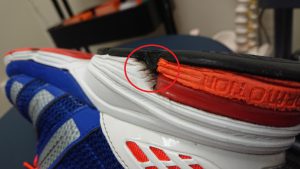 Hopefully that has helped you to find out when to change your running shoe. As much as we want to use the shoe until the upper is torn and your toes are showing, or the outsole is worn out completely, the truth of the matter is that your midsole will usually be the first to go.
Hopefully that has helped you to find out when to change your running shoe. As much as we want to use the shoe until the upper is torn and your toes are showing, or the outsole is worn out completely, the truth of the matter is that your midsole will usually be the first to go.
Come into Capital Physiotherapy and our friendly and knowledgeable physiotherapists would be happy to help you!

